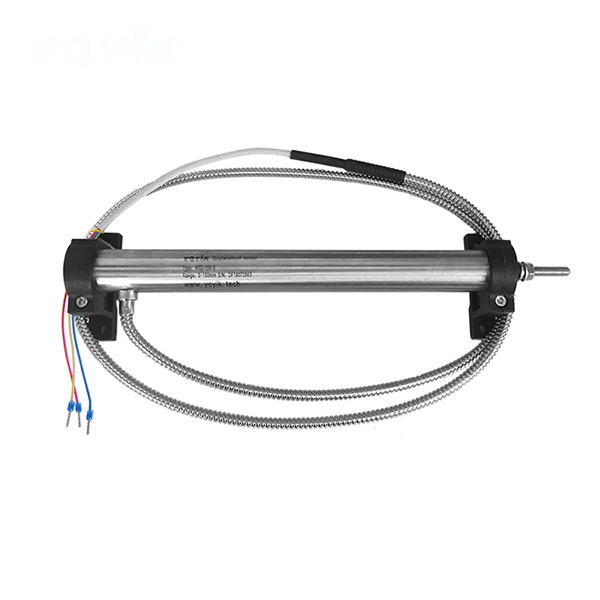Ford’s wet-belt-driven oil pump may have caused premature engine failures in the EcoSport, Focus, and Fiesta.
The National Highway Transport Safety Administration (NHTSA) is investigating nearly a quarter-million Ford EcoSport SUVs following a rash of complaints from owners. The complaints are centered around loss of power, which stems from what owners believe are faulty oil pumps, potentially even caused by debris sucked up from premature belt failures. China Hydraulic Pump

Yes, you read that right. The 1.0-liter, turbocharged three-cylinder found in the 2018 and later Ford EcoSport, as well as in certain model years and trims of the Fiesta and Focus, has an oil pump driven by a belt that Ford placed inside of the motor—and it's prone to failures. (The embed below uses strong language, be advised.)
Before we talk about some choice engineering and maintenance concerns, let's talk about what NHTSA is doing.
The agency's Office of Defects Investigation (ODI) launched its probe on Wednesday following 95 consumer complaints about the oil pump failing. The investigation covers about 240,000 EcoSport vehicles sold in the U.S., with model years ranging from 2018 to 2021.
This issue isn't exactly new. Back in 2019, Ford issued a Special Service Message for 2018 and 2019 models regarding loss of oil pressure. Ford expanded that message by issuing SSM 49726 in 2021 for other global vehicles (such as the Ford Focus) built with the same 1.0-liter motor. Subsequently, SSM 49918 called for replacing the affected EcoSports' long block and turbocharger entirely.
So what exactly is going on here? Well, looking across the internet reveals quite a few complaints about oil pump failures. And almost all of them point their finger at the wet belt that Ford uses to drive the oil pump in the 1.0-liter EcoBoost.
In several tear-downs and complaints, internet mechanics are reporting that the oil pump belt tensioner is often the point of failure. When the tensioner fails, the belt will begin to shred its teeth and material will enter the oil pan. Next, the material will enter the oil pickup and can either begin to starve the motor, resulting in metal shavings appearing in the oil, or the belt will continue to shred and eventually the vehicle will lose oil pressure when the pump can no longer be turned.
"As a Ford tech for a little over 2 years, this is the 6th time I've personally seen this happen, not including the rest of my shop," said one YouTube commenter. "What we hear is either the tensioner itself fails and there is no longer any oil pressure, or the timing belt loses every single tooth (likely still tensioner failure) and becomes smooth and of course, no oil pressure. Most cars will keep driving like this until the 'Low Oil Pressure' warning crops up, at which point we get it."
Ford says that the service interval for its oil pump belt is 150,000 miles, which is the same as its timing belt, though some failures have been reported around a third of that quoted mileage—just over 50,000 miles. Many reportedly appear to have occurred just outside of Ford's 60,000-mile powertrain warranty.
This repeated pattern of failures eventually led to several parties launching a class action fraud lawsuit against Ford earlier this year.
Now, the concept of a wet belt isn't exactly unique to the 1.0-liter EcoBoost. In fact, Ford used a similar setup in later-year 2.7-liter and 5.0-liter engines (though in the latter case, those belts were Kevlar-reinforced). Some internet sleuthing didn't bring up failures related to those motors—just concerns from owners over the potential for problems, based on the 1.0-liter's poor reputation.
Likewise, the oil pumps in the 3.0-liter Duramax found under the hood of General Motors' trucks are driven by a similar wet-belt system. As is Volkswagen's 2.0-liter EA288 TDI engine. It's not exactly a common trend, but automakers that have adopted the method have boasted about the advantages of less friction, a more compact design, and better overall efficiency. However, serviceability is a concern for DIYers and high-mileage owners.
Could this have been caught in an oil change? Probably, but unlike a magnetic drain plug which might catch metal shavings, the culprit here is belt material. If the owner's keen enough to look for the rubber compound when changing the oil, it's possible that the failures may be caught ahead of time.
But that's a big if, and considering the number of complaints waged against the motor, coupled with the cost and complexity of an engine replacement, it's no wonder that the problem finally caught government attention.
The investigation is currently in the preliminary evaluation phase. If the NHTSA believes that more information is needed, it will move the investigation into an engineering analysis phase, and potentially require a recall to be issued if it determines that a safety defect is present.
Got a tip or question for the author? Contact them directly: rob@thedrive.com
Sign Up For Our Newsletters
The chronicle of car culture, delivered to your inbox.
© 2023 Recurrent Ventures. All Rights Reserved.
Articles may contain affiliate links which enable us to share in the revenue of any purchases made.

position sensor Some benefits of our Car Shopping program may not be available in your area. Please see terms for details.